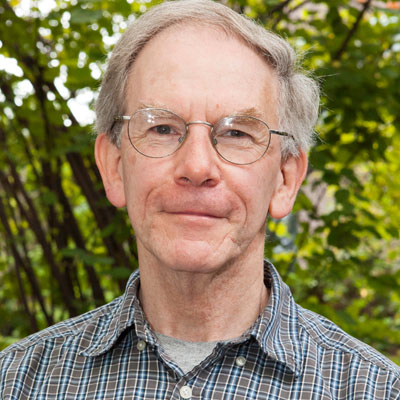Understanding neuronal regeneration of songbirds to shed light on repairing brain from damage
Songbirds who sing and humans who speak have a lot in common. One of the most notable similarities is that just like human babies who gradually learn how to talk, the songbirds also learn to sing; their song is not an innate but a learned behavior. The molecules and cellular processes that regulate plasticity -- or adaptability to changes -- in the bird brain, and the hormones that drive these changes, are very similar to those observed in mammalian brains, including humans. Dr. Eliot Brenowitz, Professor of Biology and Psychology at the University of Washington, studies songbirds as a model for understanding fundamental cellular and molecular mechanisms underlying human brain plasticity. By researching the occurrence of extreme plasticity in a well-defined neural circuit found in the songbird brain, Dr. Brenowitz hopes to unravel basic biological processes that can help us identify paths for treating human brain injury and disease.
In a scientific world that is reliant upon rodent and fly models, Dr. Brenowitz leaps outside of the box to focus on specialist species like white-crowned sparrows to understand how the brain regulates behavior and how we can tap into the brain's capacity for plasticity to repair brain damage. Song learning in songbirds is controlled by a discrete network of connected brain regions, and song is produced only or most frequently during the breeding season when the number of neurons proliferates, and deteriorates at the end of the season. Dr. Brenowitz and his team have found that when mature neurons die, they release chemical signals that stimulate the birth of new neurons that will regenerate the neural network in the next breeding season; identifying these signals will help provide insight into building therapies and treatments for neurodegenerative diseases like Alzheimer’s. The clinical implications of this research are therefore profound and the scientific paper that published these results received wide media attention around the world. With a team of three highly accomplished research scientists, students, and postdoctoral fellows, and through collaborations with colleagues with diverse expertise at the university and other universities, Dr. Brenowitz continues to seek ways to activate cellular repair mechanisms in humans following traumatic brain injury, stroke, or neurodegenerative disease.
Current projects include:
- Death and Rebirth of Neurons in the Adult Brain: Dr. Brenowitz has previously discovered that a wave of cell death naturally occurs in the bird brain at the end of the breeding season, and that there is an astonishing increase in the proliferation of neural stem cells that produce new cells to replace those which died. On the other hand, inhibiting cell death blocked the proliferation of stem cells, indicating a direct functional linkage between the death of mature neurons and their replacement by new neurons. The mature, dying cells release molecular cues to the brain to regenerate new cells, and this finding has tremendous implications for tapping into molecular mechanisms of plasticity already present in the brain to repair brain damage in humans. The next phase of this project will be to systematically identify the molecular signals released by dying neurons that trigger proliferation of the stem cells that produce new neurons that will ultimately replace the lost neurons.
- Regenerating Circuits in the Adult Brain: Dr. Brenowitz’s second project examines plasticity in the neural circuit that connects neurons in the HVC, a nucleus in the brains of songbirds important for learning and producing songs, with their target cells in RA, another important part of the song network. Neurons in different brain regions communicate with each other by sending electrical signals, and a faulty connection in human brain circuits is thought to contribute to autism and other mental disorders. Recent studies in Dr. Brenowitz’s lab have found that the two areas -- HVC and RA -- that control song behavior normally connect to each other during the breeding season, but degenerates outside the breeding season as hormone levels drop, resulting in scratchy songs. The following spring, when hormone level rises, the circuit regenerates itself. By peering into the mechanisms underlying changes in the connections between these two areas of the bird brain, Dr. Brenowitz aims to understand how neurons find their way to the right place and establish proper connections with their targets, providing insight into treating disorders like autism and depression.
Bio
Dr. Eliot Brenowitz received his Ph.D. in 1982 from Cornell University, where his dissertation was on environmental influences on song communication in red-winged blackbirds. He did postdoctoral research at University of California, Los Angeles in the laboratory of Arthur Arnold, looking at the neuroendocrine basis of song duetting behavior in several species of tropical birds. He joined the faculty at the University of Washington in 1987 and holds appointments as professor in the departments of Biology and Psychology. Additionally, Dr. Brenowitz is a member of the Virginia Merrill Bloedel Hearing Research Center, the Institute for Stem Cells and Regenerative Medicine,and the Center for Human Development and Disability and has served as an Alfred P. Sloan Research Fellow and a Bloedel Hearing Research Scholar. He served as Director of the Interdisciplinary Program in Neurobiology & Behavior 2008-2012. He is a Fellow of the American Association for the Advancement of Science, of the Animal Behavior Society, and of the American Psychological Society, and a recipient of a Research Scientist Development Award from the National Institutes of Health.
Dr. Brenowitz was always curious about nature, and wanted to understand how the brain regulates behavior and how the external environment and internal milieu interact to influence brain structure and function. He is currently particularly fascinated by the plasticity of the adult brain and how we can exploit the molecular mechanisms of naturally occurring plasticity to repair damage from injury, degenerative diseases, and aging.
Outside of his research, he loves spending time with his and other children when he is not bird watching around the world. “Raising two kids is my main job,” he chuckles. For years, he has been involved in organizing vaccination clinics at his children’s school and helping other schools in Seattle to facilitate vaccination programs. He has had many discussions with parents and teachers regarding vaccinating children, and it is a cause he has taken on for himself because he believes so strongly in it. Once his own children started growing up, Dr. Brenowitz quickly realized that not every child going to his children’s school has the good fortune of having a stable home environment, enough to eat, or educated parents who can provide an enriched environment. So he volunteers his time at local schools to tutor underprivileged kids of all ages in math, science, and reading. He remarks, “It’s important for me to get out of the lab regularly and use my education and skills to help society on a very local person to person level.” kids, He feels that helping to coordinate vaccination clinics and tutoring disadvantaged kids are just a few things he can do to return what society has invested in him, in his training and his research.
For more information, visit https://sites.google.com/a/uw.edu/brenowitz/home
In the News
Science Daily; an article about recent paper linking cell death to stem cell proliferation in songbird brain
Article in local newspaper about school vaccination clinic work


